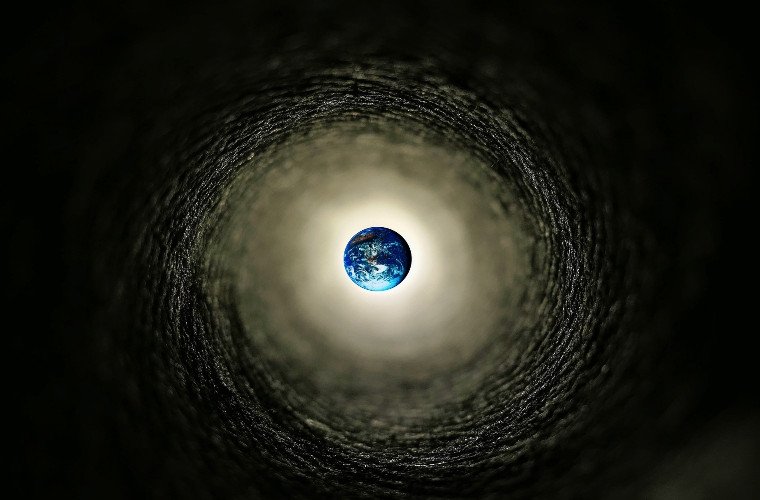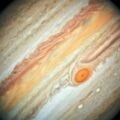Sometimes, a little escapism is healthy. So instead of pondering all the things that could kill you on Earth—say, a global pandemic—here are some things from outer space that can potentially wipe out the human species.
1) Space Covid
As if viruses from bats weren’t bad enough, we might have a bigger issue on our hands: alien viruses from space.
As Arizona State University astrobiologist and cosmologist Paul Davies warns, the presence of extraterrestrial life would inevitably bring extraterrestrial viruses.
“Viruses actually form part of the web of life,” Davies told The Guardian. “I would expect that if you’ve got microbial life on another planet, you’re bound to have — if it’s going to be sustainable and sustained — the full complexity and robustness that will go with being able to exchange genetic information.”
Davies isn’t alone in his concern. A scientific report from Stanford released in 2020 discussed risks from alien pathogens, specifically from astronauts bringing space samples back to Earth.
While the odds that NASA’s Mars sample contains an active life form that could endanger humans are extremely low, researchers know it’s better to be safe than sorry.
“The [Mars] samples returned by [NASA] will be quarantined and treated as though they are the Ebola virus until proven safe,” said adjunct Stanford professor of aeronautics and astronautics Scott Hubbard, co-author of the report.
Hubbard is an advocate of “planetary protection”—taking measures to counteract any chances of contaminating other places in the solar system. This includes extensive sterilization and cleaning of machinery and equipment.
The thought of alien viruses is undoubtedly anxiety-producing, but Davies assures that there’s little reason to panic.
“The dangerous viruses are those that are very closely adapted to their hosts,” he said. “If there is a truly alien virus, then chances are it wouldn’t be remotely dangerous.”
So while alien viruses are scary in theory, the real concern we have right now is the actual pandemic on Earth: Covid-19 in all its variant glory.
2) Asteroid strikes and space debris
You know what happened to the dinosaurs…
In 2,458 years, we might be able to say the dinosaurs had it better. The famous Comet Swift-Tuttle, which could strike Earth in the year 4479, carries 28 times the destructive energy off the asteroid that wiped out the dinosaurs. NASA has called Comet Swift-Tuttle the most dangerous object known to humanity. The last time it was seen in our inner solar system was in 1992.
Anyone reading this most likely won’t live to see Comet Swift-Tuttle, but we all bore witness to another horrifying, potentially life-ending event: Asteroid 2019 OK.
On July 25, 2019, an asteroid the size of a jumbo-jet zipped past the Earth, missing our planet by just one-fifth of the distance to the moon. That’s practically a hair’s breadth. And the scariest part? The asteroid seemingly came “out of nowhere” for astronomers.
“It shook me out my morning complacency,” Michael Brown, a Melbourne-based observational astronomer, told The Washington Post. “It’s probably the largest asteroid to pass this close to Earth in quite a number of years.”
To defend Earth from such asteroid scares, NASA is launching Double Asteroid Redirection Test (DART) sometime between the end of 2021 and at the start of 2022.
DART is to test out an asteroid deflection technique called the kinetic impactor technique: slamming one or more spacecraft into the asteroid at high speed to change its orbit. This technique works best if used far in advance, since a small nudge and course correction early on can result in more significant deviations later on.
3) Supernovae
A supernova is created when a star dies and emits a massive explosion that can destroy entire solar systems. These explosions carry the same energy in a single instant that our sun generates in one million years.
In our galaxy, the Milky Way, a star dies every 50 years, meaning we’ve lived through quite a few supernovae. So when do they get lethal?
Astronomers estimate that there’s a buffer zone of 50 light-years for Earth to live through a supernova unscathed. That’s roughly 27 times the size of our solar system. While 50 light-years seems like a comfortable distance, the odds of a supernova getting too close are higher now than they were in the past.
Right now, Earth is moving through a region of space dubbed the “Local Bubble,” a cavity in the Milky Way scientists think was caused by a supernova explosion ten to twenty million years ago. The “Local Bubble” amplifies the destructive potential of a supernova because it contains residual gas from its creation.
Regardless, the last time a supernova explosion was dangerously close to Earth was 2.5 million years ago. A study from 2020 presents additional evidence for this event: a concentration of 53Mn, a radioisotope produced by supernovae. While it’s unclear what happened all those years ago, some researchers think the explosion triggered a partial extinction—the Pliocene marine megafauna extinction.
But that was 2.5 million years ago, which can either be interpreted as so prehistoric that we have nothing to worry about or far back enough that we’re due to see it happen again.
Outlook: It’s the end of the world as we know it…
As we’ve covered, there’s a myriad of things from space that can kill us. The list goes on; we haven’t even covered gamma-ray bursts or the threat of an expanding sun.
But the scenarios listed above aren’t predicted to happen anytime soon. In fact, we’ll probably be close to extinction before any of these events even start with the way climate change is razing our planet.
The thought of an asteroid collision is terrifying, but there are enough fearful sights to see right now if we open our eyes. From dark orange skies in the Bay Area to hurricanes flooding the streets of Brooklyn and a freakin’ tornado ripping through New Jersey—there are enough things that can kill us on our very own planet.
Candy Chan is a journalist based in New York City. She recently graduated from Barnard College with a degree in History. Follow her reporting on her Twitter @candyschan.

